Hong Kong, China – Monday, February 21st & Thursday, April 21st, 2011
 Hong Kong Disneyland is a bit how I’d imagine the original Disneyland felt during its first decades, and not just because they share the same castle. Small, relaxed… and no overwhelming anxiety as I walk down Main Street. Love it or hate it, that anxiety is a pretty integral component of the modern Disney experience. Even as a passholder at Disneyland for a couple of years, the hassle of getting into and out of the park, navigating the overcrowded walkways, and making sure I’d be able to see and do enough during my visit to have made it worth my time (if not my money) was always a logistical challenge that would leave me with a bit of an edge, especially on first arrival. Fortune favors those with a strong FastPass game. It’s even more true at every other Disney park I’ve been to where I didn’t have the reassurance of an annual pass.
Hong Kong Disneyland is a bit how I’d imagine the original Disneyland felt during its first decades, and not just because they share the same castle. Small, relaxed… and no overwhelming anxiety as I walk down Main Street. Love it or hate it, that anxiety is a pretty integral component of the modern Disney experience. Even as a passholder at Disneyland for a couple of years, the hassle of getting into and out of the park, navigating the overcrowded walkways, and making sure I’d be able to see and do enough during my visit to have made it worth my time (if not my money) was always a logistical challenge that would leave me with a bit of an edge, especially on first arrival. Fortune favors those with a strong FastPass game. It’s even more true at every other Disney park I’ve been to where I didn’t have the reassurance of an annual pass.
Unfortunately, Hong Kong’s small park charm seems to have come at the expense of a perhaps more important aspect of Walt’s vision: to be successful and loved. On the success count, Hong Kong Disneyland has pretty objectively and publicly fallen short; the park is notorious for it’s struggle to achieve meaningful attendance and always brings up the rear of the Disney pack in the annual TEA Theme Index. But that’s just a symptom of a deeper illness: the park is not particularly loved by just about any group that visits it.
International theme park visitors and Disney fans are likely to find the park unoriginal and lacking in world-class attractions (though less so in the years since Mystic Manor). Tourists from China and neighboring countries are disappointed by the small castle, of which their local knock-off theme park probably has a larger and grander version. And Hong Kongers themselves are possibly the most hostile towards the park, remembering it by its disappointing debut that opened to massive holiday crowds with only four “full-size” rides, one of which was the Winnie the Pooh dark ride (and not the E-ticket Tokyo version). Just as Tokyo Disneyland was embraced as a symbol of Japan’s cultural pride that they were deserving of their own Magic Kingdom, Hong Kong Disneyland provoked the opposite response, that a foreign corporation would insult Hong Kong’s civic pride by deeming it unworthy of the real thing. Another student at HKUST told me about a business teacher that once used Hong Kong Disneyland as a case study to conclude that the only way to fix the park’s reputation in Hong Kong was to demolish it and start over.
me about a business teacher that once used Hong Kong Disneyland as a case study to conclude that the only way to fix the park’s reputation in Hong Kong was to demolish it and start over.
 While Disney’s actual strategy isn’t quite so drastic, they’re not far off: the castle is currently being radically redesigned to bring it up to “international” standards. Plenty of western Disney park fans might find the project a silly castle-measuring contest not worth wasting money on, but they’re overlooking how symbolic that small castle became amongst locals for the park’s many other failings. “Fix” the castle, and just maybe Hong Kongers will finally see the rest of the park as “fixed” as well.
While Disney’s actual strategy isn’t quite so drastic, they’re not far off: the castle is currently being radically redesigned to bring it up to “international” standards. Plenty of western Disney park fans might find the project a silly castle-measuring contest not worth wasting money on, but they’re overlooking how symbolic that small castle became amongst locals for the park’s many other failings. “Fix” the castle, and just maybe Hong Kongers will finally see the rest of the park as “fixed” as well.
As for me, while I certainly understand these changes and appreciate the many new attraction additions, I’ll also hold a certain amount of nostalgia for the year when I was able to enjoy all the qualities of a Disney park experience at the scale and laid-back pace of a smaller regional park experience.
Another thing I’ll always appreciate: convenient access to public mass transit in the form of a dedicated line on Hong Kong’s MTR. Never has getting to a Disney park from off-property been as easy and enjoyable.
To get to the park there’s this long empty promenade which I’d imagine is earmarked for a Downtown Disney-style RD&E district sometime in the future.
This fountain has a simple but effective visual trick that allows Mickey to gently surf up and down on the water spout. To get to the park you have to turn right upon reaching this fountain. The designers claimed this curved flow was in accordance with the principles of feng shui to route positive chi energy to the correct destination, although I suspect this is likely a post-hoc justification for a masterplan that is clearly meant to eventually accommodate a second gate directly across from the first.
In 2011 Hong Kong Disneyland was selling a season pass for just HK$650, or about US$83. You can’t even buy a one-day ticket to the US Disney parks for that little anymore. I was able to visit four separate occasions in spring 2011, although these photos are from only two of those visits.
The traditional Disneyland entry sequence under the train station.
And there it is, Main Street, USA. Almost exactly like at Disneyland, except with mountains in the background and without the proper cultural context. (Or trolley cars.)



 This is about as crowded as I’d ever experience Hong Kong Disneyland, arriving in the morning on my first visit after the Lunar New Year holidays.
This is about as crowded as I’d ever experience Hong Kong Disneyland, arriving in the morning on my first visit after the Lunar New Year holidays.
Various Main Street details and facades from Disneyland carry over here. Most of the international castle parks borrow elements from Disneyland and/or the Magic Kingdom, but Hong Kong’s is probably the most direct copy, especially in the Main Street area.
One feature of Hong Kong Disneyland’s Main Street that’s not found anywhere else is the Art of Animation exhibit. While not a show like Disneyland’s Great Moments With Mr. Lincoln which occupies this spot, it’s certainly better than having no additional programming here, as is the case at most other castle parks.
There’s a small gallery of artwork and models from one of the current films Disney is promoting. This was early 2011, so that film was evidently Cars 2 (even though all of this is from Cars 1).
The real attraction is the Toy Story Zoetrope, which runs every couple of minutes. The effect doesn’t work as well with a digital camera, where the difference in frame rates creates a pretty strong flicker effect.
 The rest of the gallery is a preview center of the park’s expansion plans. Toy Story Land was several months away from opening, with Grizzly Gulch and Mystic Point still one and two years away, respectively. While Toy Story Land wasn’t much more than a missed coaster credit, Big Grizzly Mountain and Mystic Manor look to be two of Disney’s best original concept attractions produced this entire decade, and certainly the new highlights of the park.
The rest of the gallery is a preview center of the park’s expansion plans. Toy Story Land was several months away from opening, with Grizzly Gulch and Mystic Point still one and two years away, respectively. While Toy Story Land wasn’t much more than a missed coaster credit, Big Grizzly Mountain and Mystic Manor look to be two of Disney’s best original concept attractions produced this entire decade, and certainly the new highlights of the park.
However, I’ve always found the layout and masterplanning of this expansion quite odd. Making a big loop around the outside of the train tracks is not great for guest flow and would suggest that the original masterplan never considered the small park might need to grow. I also wish that Grizzly Gulch and Mystic Point could have flipped locations. Mystic Manor is essentially the Adventureland version of Haunted Mansion, so putting it next to Adventureland would have allowed both lands to feel larger and more immersive. Plus, I could imagine some adjacency between Grizzly Gulch and Toy Story’s Woody’s Roundup, which might have kind of helped that land fit the park.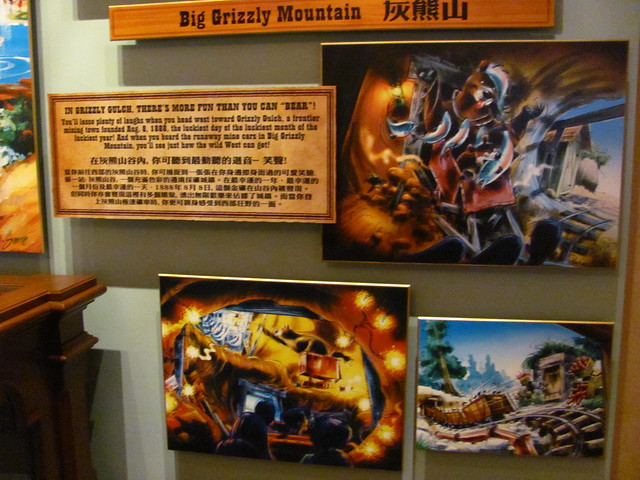




 The best place to see the construction on these lands was on the Hong Kong Disneyland Railroad. Unlike the other castle park trains, this one only has two stations in Main Street and Fantasyland.
The best place to see the construction on these lands was on the Hong Kong Disneyland Railroad. Unlike the other castle park trains, this one only has two stations in Main Street and Fantasyland.
But like Disneyland, the passenger cars face sideways towards the center of the park, meaning the only place to view the backside of the railroad is sitting at the edge of the very last car.
 Here’s Grizzly Gulch with track laid for Big Grizzly Mountain Runaway Mine Cars.
Here’s Grizzly Gulch with track laid for Big Grizzly Mountain Runaway Mine Cars.
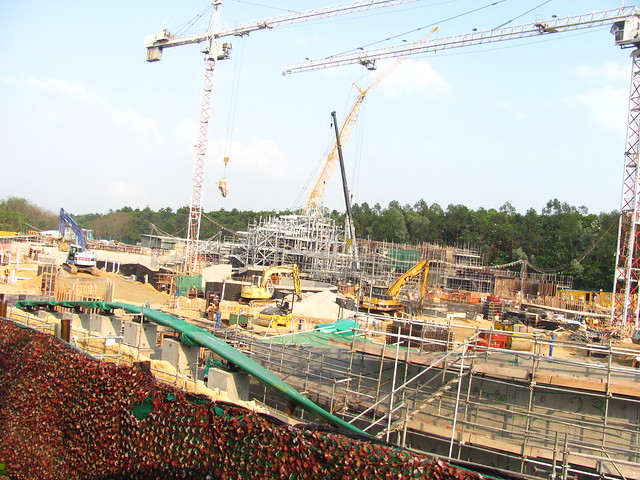
Mystic Manor was still just a giant shoebox.
This way to Toy Story Land.
Anyway, back at the center of the park is Sleeping Beauty’s Castle. No walk-though or anything else to experience inside here.
At the time, Hong Kong Disneyland was still celebrating its five year anniversary, and we had to suffer through these gold sequin and ribbon adornments. The park has more than doubled in age as I write this.
[Mickey Mouse voice]: My name is Mickey Mouse, king of kings; Look on my works, ye Mighty, and despair!
Besides Main Street USA, Hong Kong Disneyland opened with only three lands: Fantasyland, Tomorrowland, and Adventureland, probably in that order of indispensability. (Frontierland obviously proved to be dispensable.) I’ll start by crossing into Fantasyland.
Much of Hong Kong’s Fantasyland is given to fanciful abstract gardens mixed with a light Renaissance faire vibe. There’s nothing particularly historical about any of the design, but I imagine the impression it leaves for a modern audience is similar to what visitors to the original Disneyland Fantasyland must have felt in the 50’s and 60’s. Especially as the pathways are not utterly choked by strollers.
Despite having the Sword in the Stone positioned in front of it, the name of the anchoring carousel got a gender swap from King Arthur Carrousel to Cinderella Carousel.
Dumbo the Flying Elephant is another must-have flat ride at any Disney castle park.
Finally, the Mad Hatter Tea Cups rounds out the collection of Fantasyland flat rides. This one is positioned under a rather bulky canopy.
Mickey’s PhilharMagic 3D movie is also here. The grand finale still features Donald Duck’s ass. I saw the show once between my four visits to Hong Kong Disneyland.
Incredibly, a copy of Peter Pan’s Flight somehow missed the cut in this park, leaving The Many Adventures of Winnie the Pooh as Hong Kong Fantasyland’s single OG dark ride.
Similar to other installations of this ride, the queue isn’t great.
However, the ride itself is as always a cute adaptation of Winnie the Pooh and the Blustery Day. It has a decent Pepper’s ghost effect followed by an acid trip dream sequence, all in what’s otherwise a kid-friendly story about substance addiction.
I can’t think of too many traditional-style dark rides that include an on-ride photo. So here’s an on-ride photo of me filming the on-ride video from above.
The Golden Mickeys is a live show that uses a movie awards program as the framing device in order to set up a series of musical numbers based on many of their popular songs and characters. Given that Mickey’s PhilharMagic uses the same technique (and even a few of the same movies) it felt maybe a little redundant, especially given the shortage of other attractions in the land. It was replaced by a new show in 2015.
In 2011 the park’s newest major attraction was a copy of “it’s a small world”, which opened in 2008 beyond the railroad tracks waaaaay at the end of a cul-de-sac in the back of the park. I really hope the eventual Frozen Land will connect to the Small World plaza so it isn’t so isolated.
This is yet another instance where the closest copy of this attraction is the Disneyland version. However, this one places the queue and loading platform under a roof (complete with lovely drop ceiling), and as can be expected the depiction of international locations has evolved somewhat to emphasize a more Asian perspective. Also more pastels on the exterior. I’m thankful I didn’t take any pictures inside so I don’t have to sort through them.


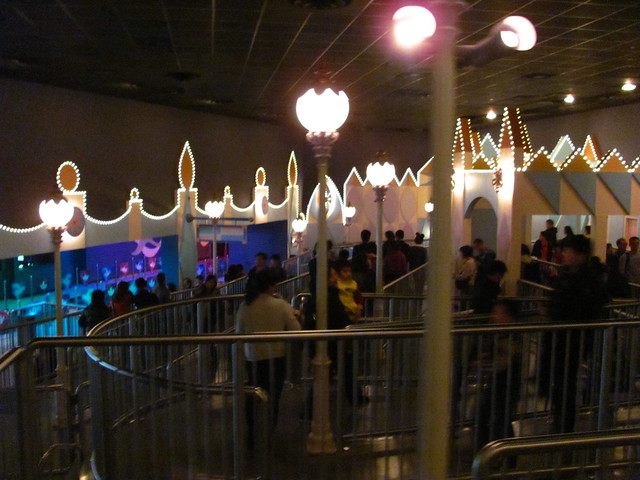 And that’s Fantasyland. The tour continues to Adventureland on the next page.
And that’s Fantasyland. The tour continues to Adventureland on the next page.












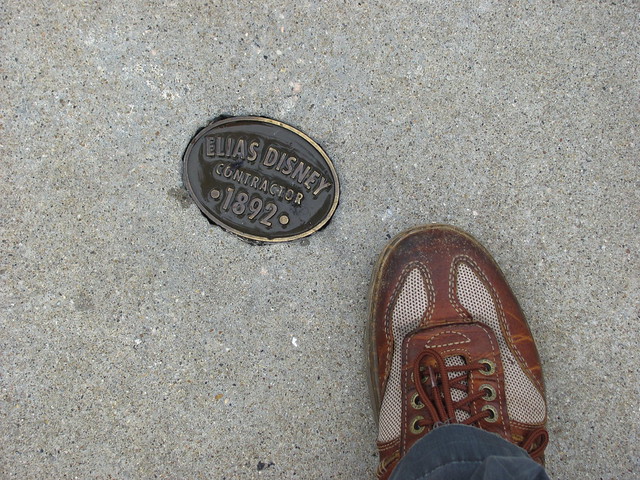










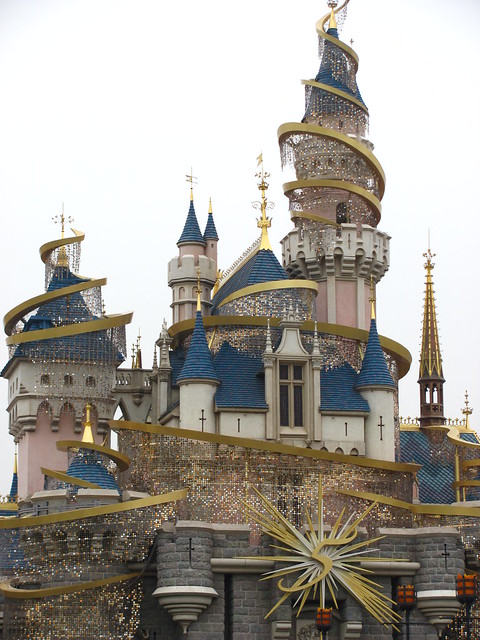


























Comments